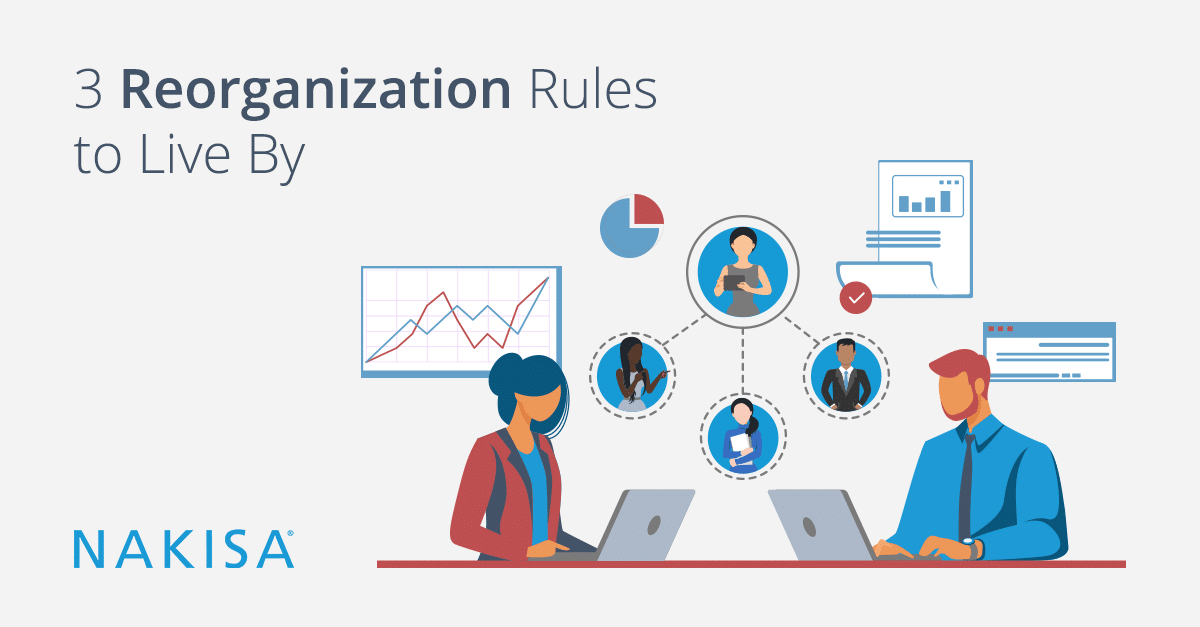No matter the industry, reorganization is a regular part of today’s modern business landscape. A recent survey by McKinsey found that 82 percent of executives had experienced some type of restructuring in their current companies. Seventy percent of these leaders reported that their most recent restructuring had occurred within the last two years.
There are many reasons for an organization to undergo a restructuring of some kind, as we outlined in a previous blog post, including mergers and acquisitions, changing management styles, downsizing or reductions in force, the adoption of new technology, filling performance gaps, because of environmental factors, or even due to changing government regulations.
Ultimately, any and all of these reasons for corporate restructuring support the same goal: staying competitive in an increasingly global business world faced with changing technology and shifting regulations.
Your company’s reorganization strategy should, ideally, help align your corporate culture and talent with your overall business strategy.
The reality of reorganization
Yes, reorganizations are common in today’s business culture. However, that doesn’t mean they’re always successful. In fact, the opposite is true.
Another McKinsey survey found that over 80 percent of restructuring initiatives fail to deliver the desired value in the necessary amount of time. Forty-four percent of business leaders reported never even finishing their reorganizations.
In order to solve these challenges, there are a few key questions organizations should ask themselves as they develop a successful company reorganization strategy:
- Are we communicating our strategy effectively and have we allowed employees to provide feedback on the best path forward?
- Is our restructuring planned with the company’s future in mind rather than its present? Are we planning ahead for changes in the market?
- Do we have the technology in place to support our reorganization plan?
This last hurdle of effective technology integration is one of the most important factors in a successful restructuring.
While traditional spreadsheets may have been the tool of choice for restructuring in the past, Deloitte’s 2018 report on M&A trends found that more than 63 percent of organizations were moving beyond the spreadsheet and choosing cloud-based technology tools to ensure proper reporting and integration to support the reorganization itself and sustain HR-related operations well afterward. Many cited reduced costs, conflicts, and time, and decreased potential for human error as the reasons they transitioned to new solutions. Other advantages to transitioning to a cloud-based organizational design solution include clear and accurate organization visualization, data integrity, and powerful, real-time collaboration tools.
The 3 key rules for a successful reorganization
So how can organizations streamline their organizational change and align with KPIs? McKinsey outlines several rules of the road for a successful reorganization with the help of technology:
1. Visualize global HR data
Develop an accurate, verifiable picture of your current organization including structures, processes, and people. Visualize organizational details such as demographics, reporting, relationships, talent profiles, and more.
2. Use org chart metrics
Track employee positions and costs, measure results, and plan for the future of your organization.
3. Mitigate risks associated with data integrity and talent loss
Stay competitive with continued analysis and organizational design during day-to-day business functions to promote efficiency and support your short- and long-term business strategy.
How does HR software facilitate effective company reorganization?
Nakisa Workforce Planning software (formerly Hanelly) helps organizations visualize, plan, and implement better-aligned workforce structures that support business strategies. The Nakisa solution also helps businesses maintain clear lines of communication, increasing employee engagement by enabling networking with peers, fostering skill-sharing and education, and increasing organizational visibility. The Nakisa solution supports and nurtures your best talent throughout any reorganizational design process and sustains it well beyond. Interested in learning more? Click here to book a call with us, or explore the various products of the Nakisa Workforce Planning Portfolio here.





